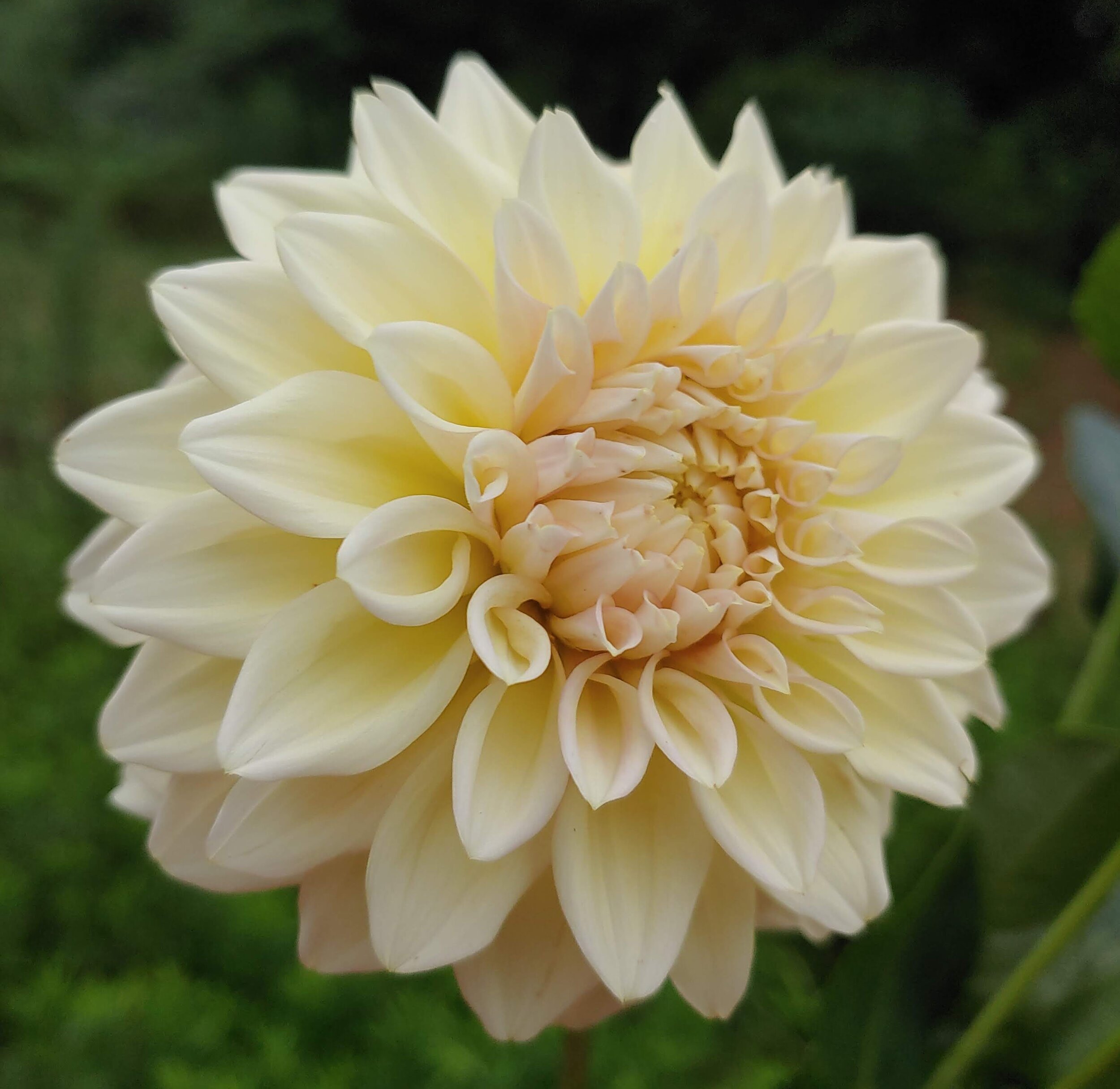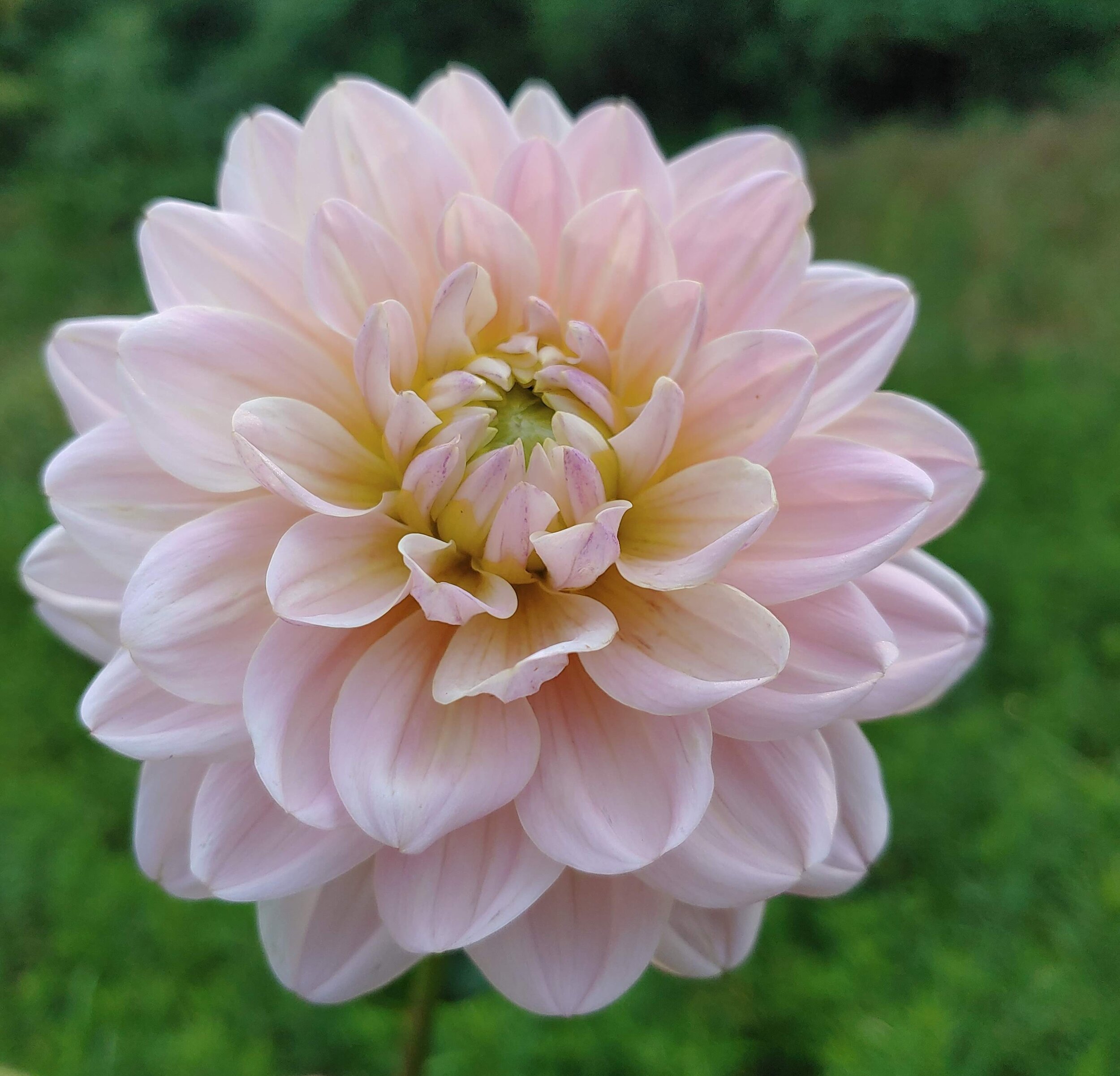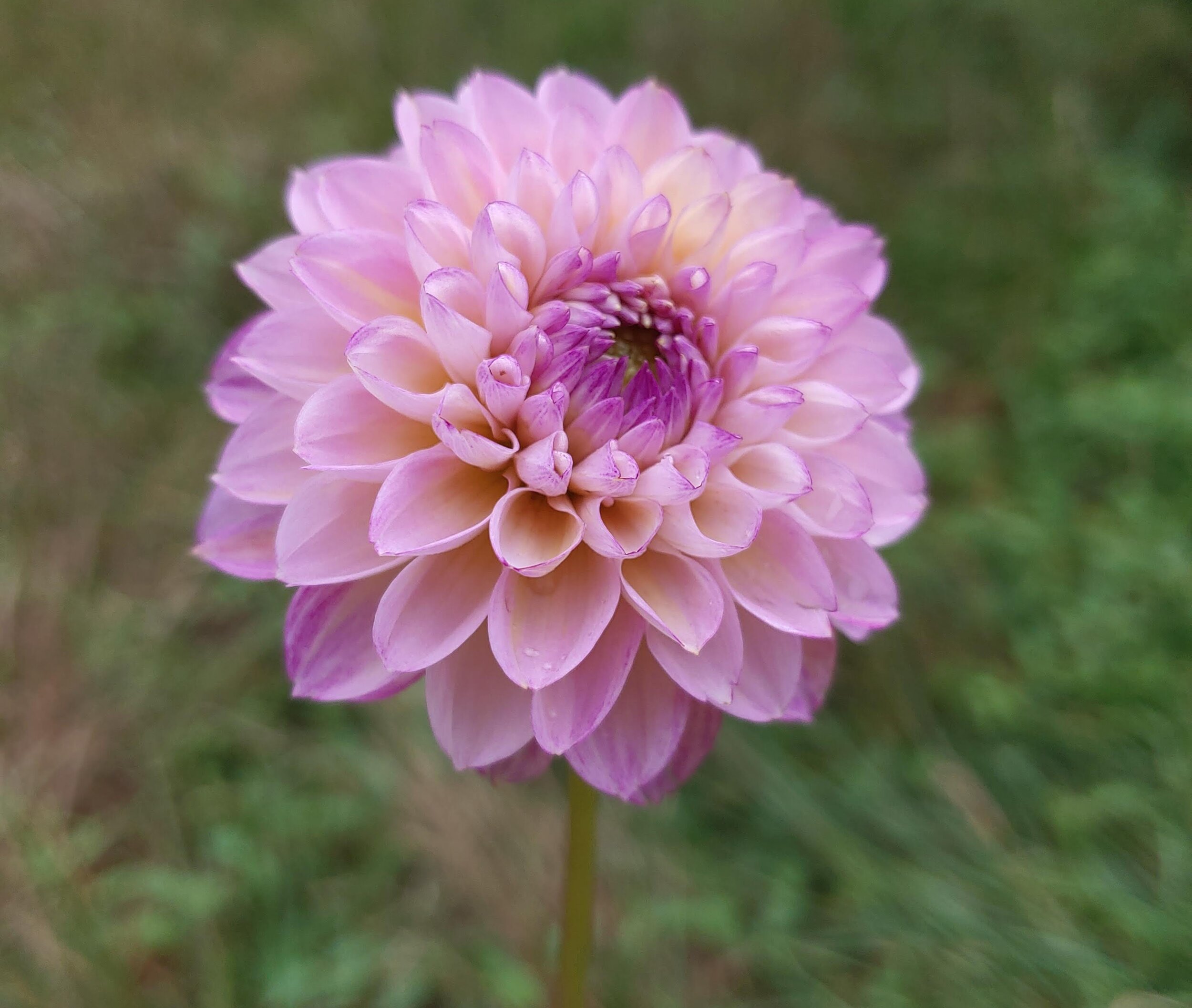
How to Achieve the Best Vase Life Out of Your Dahlias
Why is it that some of the most beloved flowers don’t last very long? Is that why we love them? Their ethereal beauty? Dahlias definitely fit into this category!
Before we begin, let’s set some expectations. Dahlias are a shorter vase life flower. There’s no way around it- it’s not gonna last 2 weeks. On average dahlias last from 3-7 days. Rarely do I find a variety that goes longer than 7 days.
However there are some basic tips to get the longest life possible out of your blooms. (And don’t you dare skip this part b/c everyone thinks they know this but almost everyone doesn’t do at least one of these!)
3 Basic Tips for Harvesting Cut Flowers:
Clean Vase, Bucket, Vessel — whatever your flowers are going into. Yeah, yeah, yeah— We know this. But do you really? More often than not, when people come to pick up flowers, they grab a random bucket and it’s always dirty. Florist and retail customers alike. I rarely see nice clean buckets. Now I know some people go clean their bucket when they get home or to their shop but at that point, the bacteria has already been introduced to the flowers. You want the bucket to be so clean you would let your kids drink out of it! Bacteria is the worse cause of shortened vase life.
Clean and Sharpen Your Clippers- Make sure you are cleaning your clippers regularly. Like at least once a week. You can scrub them, use an alcohol dip, or a special cleaner. Doesn’t really matter how, just make sure you are cleaning them. Also make sure they are sharp and make sure you are using actual clippers— kitchen and crafting scissors aren’t really made for harvesting flowers. There are some specialty floral scissors out there that can work if you prefer to cut with scissors instead of clippers. ARS is my favorite brand; I like the light duty fruit pruner to harvest.
Harvest in the Early Morning or Evening- Never cut in the middle of the day if you live in a hot climate. Every summer I’m jealous of Northern farmers who can harvest all day. Sugars in the plants are highest in the morning so it’s a good time to cut. The plants will re-hydrate faster. However, the evening will work too if you aren’t a morning person.
These 3 tips work with all cut flowers but now let’s talk about dahlias specifically. I had a conversation about vase life with a fellow grower last week and we were sharing our processes. And as has happened many times in the past, every grower I talk to does it a little differently. So I’m going to share my process- your mileage may vary!
Why is it not “one size fits all?” Because dahlias more than other flowers are very susceptible to changes in water (City or well, minerals in the water, etc), how hydrated the plants are in the field, current weather conditions, etc. Time of year plays a big part too- During the summer, I usually see a reduction of 1-2 days in vase life from the cooler days of Fall.
I’m going to talk about this from 3 points of view:
For the Home Gardener:
First- make sure you are following the above 3 steps. Second, go online right now and order a container of flower food. Chrysal and Floralife are the two most well known brands- either will work. I’ve never noticed one better than the other. You are looking for a powdered substance- not Quick Dip or Holding solution. Make sure you get flower food for cut flowers— not growing plants. ;)
Place the flower food in your water as you are harvesting. Let the blooms sit in the bucket in a cool, darkish place for at least 2 hours before using them. They need to cool off and really drink before you arrange them. Then make sure you put flower food in your vase as you are arranging. Read the directions on your particular brand and use accordingly.
So why did I tell you to go get flower food instead of the popular- “Just put a few drops of bleach in it” method. Well because dahlias need sugar— Flower Food not only has a bactericide which keeps your water clean but also has a sugar component which feeds your dahlias. Not every flower needs this but dahlias definitely do! Vase life usually increases by 2 days when you start using flower food.
Recut your stems at least every other day and change the water/flower food. You can do it daily if you really want but I’ll be honest, I don’t have time for that. (I actually do my vase life trials where I treat the blooms as rough as possible to see how long they can really make it!)
For the Commercial Flower Grower:
So obviously follow the 3 basic steps above. After I’ve cleaned my buckets, sharpened shears, I squirt holding solution into my water. Holding solution is a product that hydrates your flowers but also keeps them from opening. This is perfect for dahlias because you want a solution that slows down the natural process. After I have finished harvesting, I remove the organza bags and then I recut my stems into a fresh bucket of water with holding solution. (If you don’t use organza bags you may can skip this step b/c you aren’t taking the stems out of water to remove the bags— but check your water, sometimes it can become nasty while harvesting. You want it clean before it goes into the cooler).
The next step is to place your dahlias (make sure they are dry) inside the flower cooler. Now, I’m gonna step on my soapbox for a minute- If you are growing dahlias commercially, you need a flower cooler. Doesn’t matter if you are growing 10 plants or 10,000, you need a cooler to properly condition your flowers. The flower cooler gets the field heat out quickly which is imperative for good vase life. A cooling period of at least 12-16 hours “sets” the bloom- really this is the period the flower needs to hydrate properly. Then the dahlias can be held for up to 3 days before sale. I don’t hold any longer than that because after that vase life starts to drop dramatically. I try to cut my dahlias as close to their sale date as possible. The flower cooler is crucial to getting a high quality stem. Having a cooler means you can cut the flower at it’s peak point and not cut everything the night before you need them— this results in blooms being past their prime and not lasting very long. A cooler is one of the first investments you should make as a commercial flower grower. Ok- Off my soapbox now.
For the Florist:
If you are growing your own dahlias, follow the steps for a home gardener or if you have a flower cooler, then follow the steps for a commercial grower.
But let’s talk about processing dahlias when you receive them from the grower. First off, get to know your grower. Ask them if they have a flower cooler- if not, I’d hesitate before buying from them. If you can get your stems the day before your event, they’ll be fine. But if not, go with a grower who has invested in a cooler and has put time into learning how to condition their flowers. The stories I hear from florists about dahlias crashing on the wedding day are usually from growers who aren’t putting in the time to learn how to condition their flowers.
Now that you have vetted your grower, recut the stems into cool water with flower food. Once the stems come out of the cooler (from your grower or your own), they should go into flower food. You’ll also want to put flower food into your container water when designing with dahlias. Honestly flower food is a good idea anytime you are mixing flowers. There’s bound to be a dirty stem type of flower in your mix.
If you have a flower cooler, store your dahlias or arrangements with dahlias in there until your event day. If using large blooms such as cafes, I’d recommend adding those onsite as they can snap their heads easily during transport. If you are using dahlias in retail arrangements/bouquets, I’d recommend sticking to ball types or smaller decoratives. Those usually have a longer vase life. It would also be a good idea to question your grower as to what varieties last the longest in the vase. Also, when using dahlias for retail, it’s best to sell them within 3 days of receipt. Any longer than this and the end consumer won’t have much vase life. I always appreciate when a florist lets me know how they plan to use their dahlias- then I can give them the freshest bloom possible for their intended use.
To summarize- Clean Vessel Always, Sharp Clean Clippers, Cool Temperature Harvest, and Flower Food give you the longest vase life!
The Midsummer Malaise
Have you looked at your dahlia plants this summer and thought: What is going on with my dahlia? It looks awful!
You may be suffering from what I call “The Midsummer Malaise” (TMM). TMM isn’t an official disease or anything like that. But it’s a common issue I see on Dahlias at least once a summer, especially if you live in a hot climate.
Usually it looks a little something like this. Brown crunchy or soggy (if it’s been wet) leaves or perhaps yellow leaves if you catch it early. These are signs of stress. Ideally dahlias love more moderate cooler temps- 60-70’s. Well most places don’t get those until Fall. But in order to have dahlias in the fall, you have to grow them through the summer. So you have to get them through the heat.
So what do you do about it?
1. Clean up the plant. Remove any brown, yellow, crunchy dead leaves— anything that’s not green and luscious.
They should look like the picture below. Some growers actually pre-emptively remove all the foliage on the lower 18” of the plant. But I find that’s a lot of extra labor for 2200 plants. So I remove it where needed.
2. Inspect the plants for any sign of disease- especially powdery mildew. PM looks like a white dusting on your leaves- when it starts, it can occur just in small spots on the leaves. We’ll talk more about how to deal with PM another time. For now just notice if the plants don’t look “normal.” And by normal I mean, they should be solid green - dahlias don’t have any variegation in the leaves. It’s very slight in the photos below but those lighter greenish yellow patches are a tell-tale sign.
If you see sings of yellow mottling, then you are going to want to investigate further. That could be a sign of disease or nutrient deficiency. I tend to treat for nutrient deficiency before assuming disease unless I see any other tell-tale signs of disease.
3. It’s time for a little TLC. Dahlias are pretty hungry and need to be fed regularly to perform well. So it’s time to fertilize.
The type of fertilizer is going to depend on the stage of growth. If your plant is less than about 6 weeks old then a fertilizer that includes a bit of nitrogen is good. Dahlias don’t need loads of nitrogen. Nitrogen promotes green growth. Generally you are looking for a fertilizer that is higher in phosphorus and potassium. This is a good time to know what nutrients your soil contains (hence the reason you always hear gardeners talk about taking a soil test).
***But I know most of us didn’t stop and soil test this spring. (Don’t feel bad, I didn’t test for several years when I started gardening). You can test this fall and you’ll be ready for next year!***
So if you don’t know what nutrients your soil is low in, you do fly a little blind. But since we know that dahlias like phosphorus and potassium, we’ll look for that. Fertilizers that are made for tomatoes or roses are also good for Dahlias. I encourage you to seek out an organic fertilizer. Also I prefer liquid feeds at this point. I use a powdered/granular fertilizer when planting but prefer liquid during the growing process. I just find it easier to apply. (Brands differ from place to place and that’s why I feel it’s more important to tell you what to look for in the fertilizer than an actual name brand.)
Feed your dahlias (according to the instructions on your fertilizer) about every other week from now until about a month before your first frost date.
4. Lastly, make sure your dahlias are getting plenty of water. You can’t do anything about high heat but you can control the moisture. I try not to let my soil completely dry out. You do want to make sure you have good drainage though. Dahlia tubers don’t like sitting in mucky wet soil.
The Midsummer Malaise is bound to get you at some point and some years it is more extreme than others. But it doesn’t have to spell a death sentence for your plants. It just means it’s time for a little garden therapy for you and TLC for your plants!
Getting the most out of your Dahlias
The weather has finally turned to Fall here in the South. Let’s talk about the queens of Fall— Dahlias!
Miss Amara in the greenhouse
Vase Life
If you’ve ever cut a dahlia and put it in a vase, you know they can be short lived beauties. However they have such a jaw dropping beauty that I don’t mind their lesson in appreciating all beautiful things no matter how fleeting. If you are growing your own, cut early in the morning for best results, late evening if you aren’t an early bird. The sugars in the plant are at their highest in the morning. Never cut in the heat of the day. Place in a cool container of water (make sure your vase is squeaky clean— think “would I drink out of this?”) Then add a bit of flower food. You can buy flower food online from places like Amazon or floral supply sites. Chrysal and Floralife are two popular brands. It comes in liquid or powder form— both work well. You are looking for the one that says “flower food”, not quick dip or holding solution. Maybe that sounds obvious but there are a lot of choices out there.
**After writing this blog post, I got a few questions from other growers and wanted to note that this blog was written for the home grower. Commercial growers have other tools (flower coolers, etc. ) available to them for conditioning. Conditioning dahlias for sale to a wholesaler or florists as a commercial flower grower would be a whole other blog post.
When receiving a bouquet of dahlias, you follow the same procedure. Recut about a 1/2” off the bottom of the stem, place in clean cool water in a clean vase. Dirty vases and dirty water are the enemy of making your flowers last. Change the water every day if you can, at least every other day. Also, recut the stems and add more flower food each time. If your bouquet contains a packet of flower food— you can split it in half if your vase isn’t too big.
Growing Dahlias
A few tips for this time of year if you are growing dahlias. It’s time to stop fertilizing them. You don’t want to generate a lot of new growth. We are mid way through September and from now on out, the plants won’t produce too many new buds. The already formed buds will develop and bloom. You’ll start to see the blooms taper off by mid October. The plant will also be putting a lot of energy into developing tubers. This time of year is when you really want to watch the amount of rain we get. Extreme heavy rains can cause tuber rot and also produce softer tubers that don’t store well. We’ll have a frost by early November most years but as long as your dahlias have been in the ground and growing for at least 120 days, you can dig the tubers before frost. The tubers will be fully formed. So if you don’t relish digging tubers in the cold, you can go for it by late October usually. I’ll post a blog in a few weeks about digging, dividing, and storing tubers.
***If you are a commercial grower, you can do one last fertilization about 6 weeks before your last frost which would be about now in South Carolina. The intense production required by commercially grown plants requires more nutrients than the average backyard dahlia plant.
After the vase
There are a few options for your blooms after you’ve enjoyed them in the vase. You can hang them upside down to dry— the fuller the bloom and brighter the color, the better it dries. Dahlia petals are edible (although I don’t think they taste that great!) But you could style your food for your latest Instagram post with dahlia petal sprinkles. You can also pull the petals off the bloom and make art. I like to deconstruct the flowers and make mandalas, flower quilts or abstract designs. It’s very relaxing!
I hope this helps you to get the most out of your dahlias. If you haven’t gotten a dahlia bouquet from us this year, it’s the perfect time for it. The dahlias will be at their absolute best in the next few weeks. Check out our website for more information.













